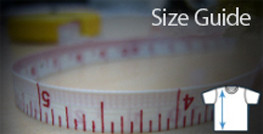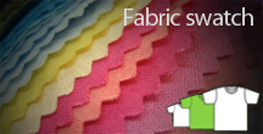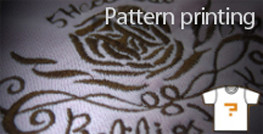About Color:
1.Will fabric color exactly the same if we apply the same dyeing formula and conditions?
2.Will the same color looks different under different light sources?
3.Will logo color be exactly same as the artwork design from computer?
4.Will color deviations be in similar level for embroidery and screen print?
5.Will there be color deviation between trims (e.g. color fabric, zipper etc) to the body fabric color?
6.Is it possible to make bright and fluorescent color?
7.What colors should we wear in different seasons?
8.What attentions we should pay when buying clothes?
Q: 1.Will fabric color exactly the same if we apply the same dyeing formula and conditions?
A: The answer it no, even we apply the same dyeing formula and conditions in each time, there are still shade-band difference (color deviation from different dying lots). It is because there are uncontrollable dyeing factors like water quality, fabric quality, color absorptions. Normally, color deviation between different dyeing lots may vary with 5%, but the color tone running to which directions maybe hard to control. Also, such color deviations have to be checked in specific light source under light box.
Q: 2.Will the same color looks different under different light sources?
A: Definitely. This is quite technical. In the nature, the sun is the best light source to exhibit difference colors. Other man-made illuminations is often to replicate visual color effect of the sun, this is call color rendering. Customers / buyers / brands may have different color light sources in their product display area. Some prefer to use yellow light source (e.g. U3000) and some prefer to use white light sources (e.g. D65, CWF). These different light sources have different wavelengths and when they reflect the lights from the object, will cause different visual effect. Thus the visual effect of a color under different light source will be visually different.
Q: 3.Will logo color be exactly same as the artwork design from computer?
A: Logo printing can be mainly divided into three categories: Screen Print (or called Silk Screen Print), Heat-transfer Print and Embroidery. There are also other printing methods like digital print, inkjet print, sublimation print etc. But, no matter what printing method is used, artwork color cannot be completely duplicated as the physical existed printed logo due to:
1. Artwork color is previewed on computer screen only, and different screens may display the color differently.
2. Screen Print logo is produced by mixing different printing staff to achieve the best match to the original requested color (e.g. Pantone Color). Also, due to difference in material (printing materials applied on fabric), the final produced logo may visually viewed to have color deviation from the Pantone Color, this is unavoidable.
3. Different viewers have different perception towards the same color, and their own preference to certain colors. Therefore, it is quite judgmental to judge if a color is match or not.
4. Color deviation is found on Heat-transfer Print as a series of process is involved and color will be affected in the process when logo is printed on a specific plastic film and then heat transferred to be printed on the apparel.
Q: 4.Will color deviations be in similar level for embroidery and screen print?
A: Color deviation in embroidery is less than screen print as customers can choose threads with different pre-dyed colors for embroidering the logo. However, color deviation still exists when the threads are made in different dyeing lots. On the other hand, screen print color is by mixing different print material to match back to the original requested color, and combine with fabric, the final visual effect will have larger color deviations when compare with selected color standards.
A: Yes. The reasons are:
1. Trims are made of different materials compared with body fabric, they have different dyeing conditions and color absorption properties. Shade-band difference exist in different dye lots of the trims and the fabric.
2. Trims have different weaving pattern to the body fabric, the fabric structure will cause different light reflection and thus result in visual difference.
Q: 6.Is it possible to make bright and fluorescent color?
A: Basically yes, but it depends on how bright and fluorescent the color is. Sometimes, very bright and too fluorescent color cannot be made as there are many restrictions on fabric and dye staff limitation as well.
Q: 7.What colors should we wear in different seasons?
A: Black or dark color garments tend to absorb heat easily; however, they also tend to release heat easier in shady and cool areas. White or light color clothes are easier in releasing heat. So for spring and summer, we usually wear light color clothes, while in autumn and winter, we wear dark clothes to retain more heat.
Q: 8.What attentions we should pay when buying clothes?
A: It really depends on personal preference such as person favorites towards colors, styles and cutting etc. Below is some general information:
Ø Light color clothes make body shape to be more obvious and fatty.
Ø Dark color clothes make wearers slimmer, stylish etc.
Ø Bright color garments make people look more outstanding and attractive. For example, yellow, red colors give more warm feeling.
Ø Dull color garments make people look more mature and dependable. For example, Black, navy colors give more stylish and cool feeling.
Ø There are some cross matches to give big contrast or coherent style.
We should also pay attention to the fabric appearance, sewing, hand-feel and overall quality of the garment. Some garments that are constructed by soft and thin fabric may reveal the body shape obviously. For example, obese people may not tend to wear horizontal-stripped, thin and tight clothes. Tall and slim people are not appropriate to wear vertical-stripped garment styles. Some garment cutting / styling may give illusions to body proportions. For example, high-waist skirt tends to create illusions that the legs are slender, while low-waist skirt is vice versa in creating such illusions.
The first priority that we use to buy clothes is always comfort, esp. for intimate wear like underwear and sportswear which should be fit and comfortable in wearing. We should also consider functionality. For example, some sportswear is designed to wick sweat, and thus provide cool and comfortable feeling during exercise, it also give large freedom of movement, and usually made by 100% polyester fabric which is resistant in shrinkage and deformation and such characteristics are more suitable as sportswear are washed more frequently. Some garment styles such as pajamas or causal clothes (e.g. Tee, Polo-shirt, vest, cargo pants etc) tend to be light and loose.



